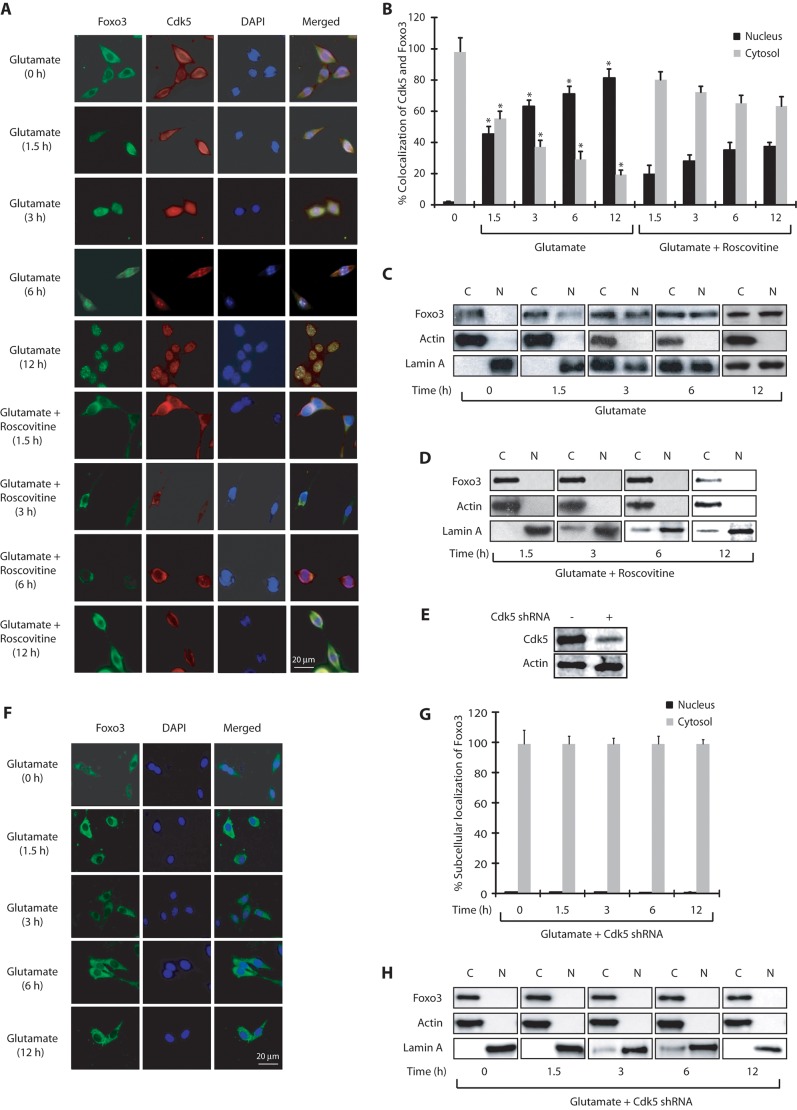Fig. 2.
Cdk5 promotes nuclear localization of Foxo3 upon glutamate stimulation. (A) Glutamate stimulates nuclear translocation of Cdk5 and Foxo3. HT22 cells were treated with glutamate for 0–12 h with or without roscovitine, followed by immunostaining as described in the Materials and Methods. Representative pictures are shown. (B) Percentage of cells showing nuclear translocation of Cdk5 and Foxo3a. At least 100 cells from 10 random frames were counted. *P<0.01, compared with untreated HT22 cells (Student's t-test). (C,D) Subcellular fractionation of Foxo3 in glutamate-treated HT22 cells in the absence or presence of roscovitine as described in the Materials and Methods. Actin is the cytoplasmic marker and lamin A is the nuclear marker. N, nuclear fraction; C, cytoplasmic fraction. (E) Scrambled- and Cdk5-shRNA-infected HT22 cells (F) Cdk5 knockdown inhibits nuclear translocation of Foxo3. HT22 cells were treated with Cdk5 shRNA for 30 h, followed by glutamate treatment for 0–12 h. (G) The percentage of cells showing nuclear translocation of Foxo3. (H) Cdk5 shRNA infected HT22 cells were treated with glutamate (0–12 h) and –fractionated as described in the Materials and Methods. Actin is the cytoplasmic marker and lamin A is the nuclear marker. N, nuclear fraction; C, cytoplasmic fraction. Graphical results are mean±s.e.m. Each experiment was repeated at least three independent times.

